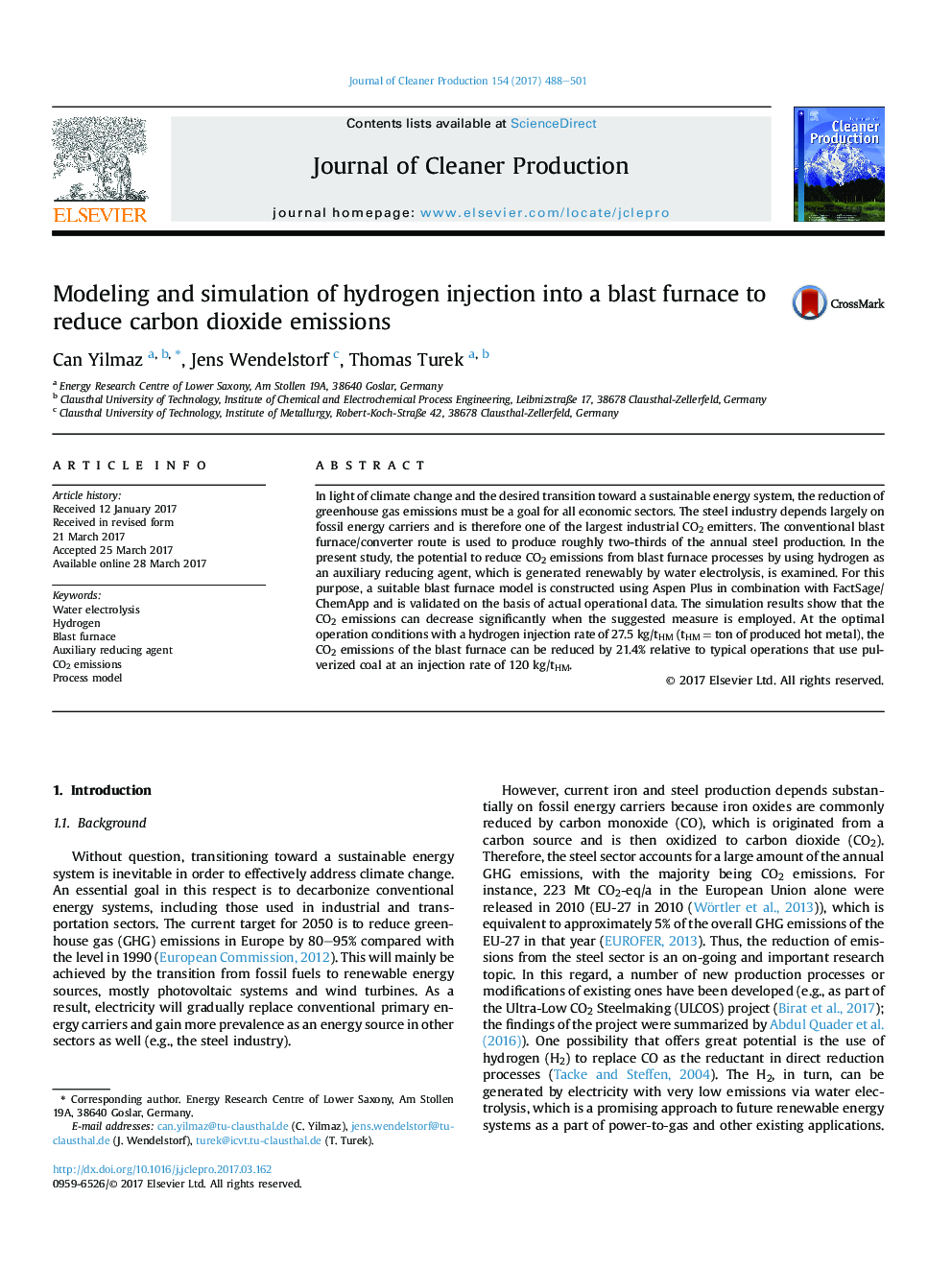| Article ID | Journal | Published Year | Pages | File Type |
|---|---|---|---|---|
| 5479758 | Journal of Cleaner Production | 2017 | 14 Pages |
â¢Constructing an energy and material balance model of the blast furnace process using Aspen Plus.â¢Integrating well-established thermodynamic database FactSage.â¢Simulation of injecting pure hydrogen into the blast furnace as an auxiliary reducing agent.â¢At optimal operation conditions, CO2 emissions of the process can be reduced by 21.4%.
In light of climate change and the desired transition toward a sustainable energy system, the reduction of greenhouse gas emissions must be a goal for all economic sectors. The steel industry depends largely on fossil energy carriers and is therefore one of the largest industrial CO2 emitters. The conventional blast furnace/converter route is used to produce roughly two-thirds of the annual steel production. In the present study, the potential to reduce CO2 emissions from blast furnace processes by using hydrogen as an auxiliary reducing agent, which is generated renewably by water electrolysis, is examined. For this purpose, a suitable blast furnace model is constructed using Aspen Plus in combination with FactSage/ChemApp and is validated on the basis of actual operational data. The simulation results show that the CO2 emissions can decrease significantly when the suggested measure is employed. At the optimal operation conditions with a hydrogen injection rate of 27.5Â kg/tHM (tHMÂ =Â ton of produced hot metal), the CO2 emissions of the blast furnace can be reduced by 21.4% relative to typical operations that use pulverized coal at an injection rate of 120Â kg/tHM.
Graphical abstractDownload high-res image (173KB)Download full-size image
